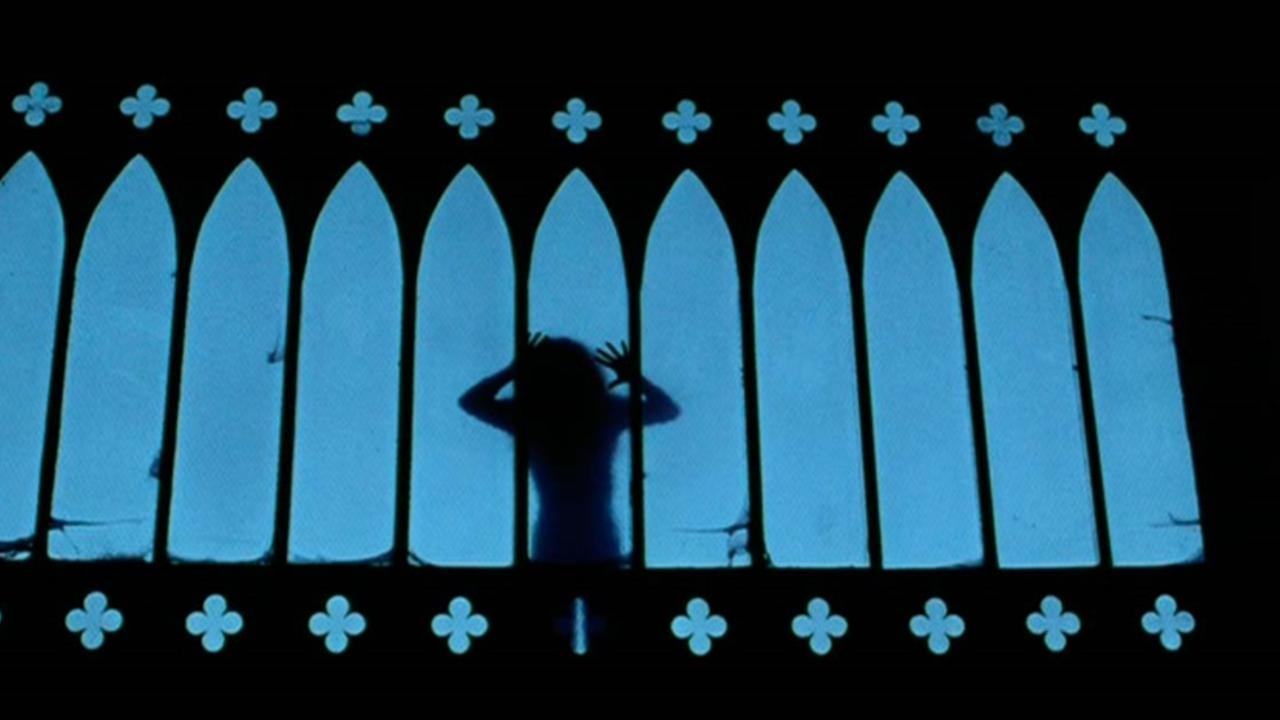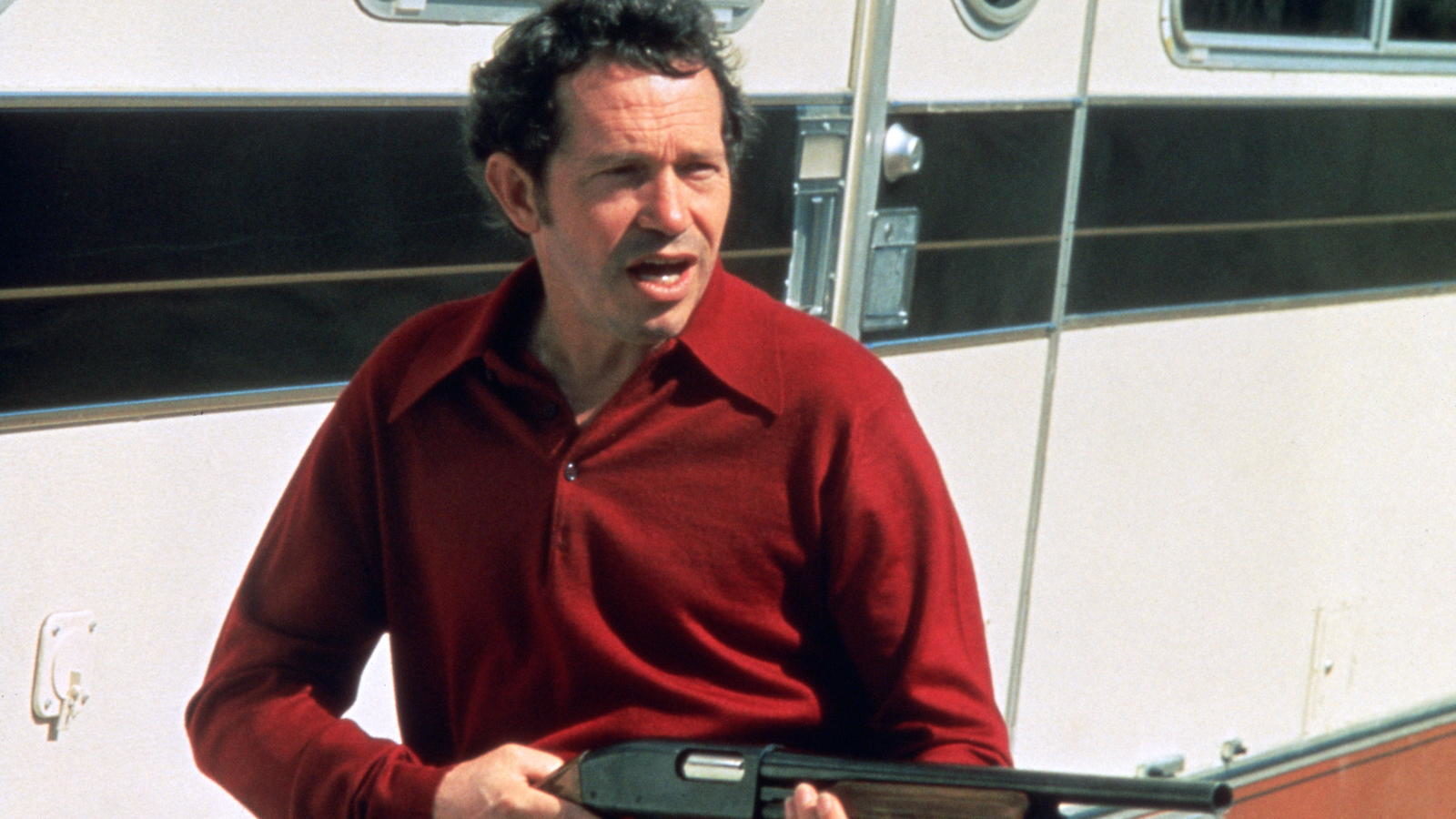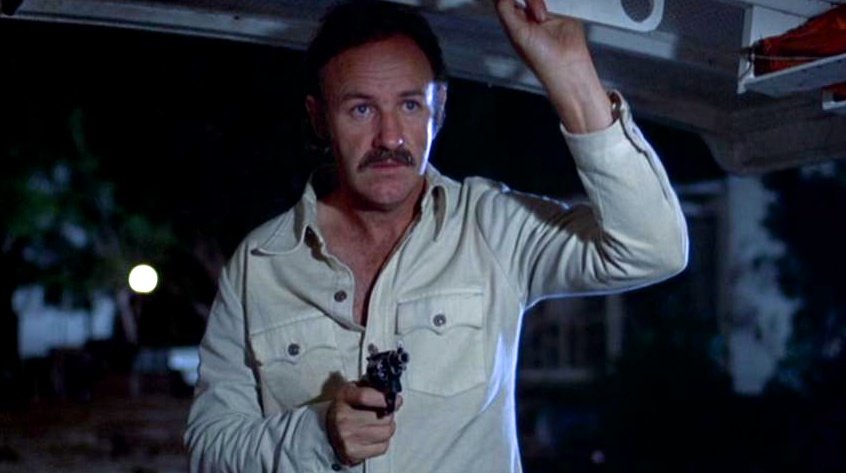6. Messiah of Evil (1974)

Arletty (Marianna Hill) arrives at her missing father’s abandoned beach house. She soon learns that the town is inhabited by the walking dead.
Messiah of Evil is the definition of a hidden gem for horror fans. It is the most forgotten, yet stylish and visually-stunning zombie film, with an arthouse flair unto itself. It currently holds a 100% fresh rating on Rotten Tomatoes. One critic called it “a high point in creativity for the independent American horror film movement of the 1970s.” Its psychedelic set design and gothic lighting aid in engendering its surrealist vision. Messiah of Evil’s finest assets are its two highly-memorable scenes, which master suspense.
In the first scene, Laura (Anitra Ford) wanders through a deserted supermarket. When she finally locates the customers and staff, they are all feasting upon meat from the butcher’s counter. When they see Laura, they begin to chase her down the aisles. In the second scene, Toni (Joy Bang) watches a movie in an empty cinema. Unbeknownst to her, every single row behind her is gradually filled with zombies. With its hippie main characters, Messiah of Evil is interpretable as a representation of the persecution the counterculture endured, due to their nonconformity.
7. Race With the Devil (1975)

Two couples (Warren Oates and Loretta Swit, Peter Fonda and Lara Parker) take a road trip across Texas. After witnessing a human sacrifice, they are pursued by a satanic cult.
In similarity to Messiah of Evil, Race With the Devil is another overlooked, yet hugely influential grindhouse horror. It is a road movie of cults, dirt bike racing, hidden rattlesnakes and shotgun battles, in what is the decade’s best car chase. Importantly, the movie succeeds in viscerally expressing the feeling of acute paranoia. This undercurrent of conspiracy is best encapsulated by a scene where Alice (Loretta Swit) and Kelly (Lara Parker) are laughing in a motel’s pool. Their smiles abruptly vanish, when they grow aware of all the motel guests staring blankly at them.
This endures too long for comfort, the camera zooming in on the almost supernatural expressionlessness of the hillbillies’ faces. In the same vein as Night Moves, Race With the Devil is inspired by the social tension of the post-watergate era, as well as the ideological battle between hippies and the mainstream. However, Race With the Devil transcends mere association with its era. Fundamentally, it raises an essential, timeless question: “can we trust other people?”
8. Night Moves (1975)

Private detective Harry Moseby (Gene Hackman) is hired to find a runaway daughter (Melanie Griffith). When his search takes Harry to the Florida Keys, the case grows darker and increasingly more complex.
What is most unique about the cerebral Night Moves is its unusual tone. In the first New Hollywood title, Bonnie and Clyde (1967), director Arthur Penn translated that era’s freewheeling excitement. Conversely, Night Moves’ bleak, despairing tone is informed by the post-hippie dream, post-Watergate landscape of the America it was produced in. The sustained eeriness endows Night Moves with the undercurrent of a horror film, building slowly to its memorable twist climax. In this way, it is similar to The Texas Chainsaw Massacre (1974), which also reflects the disillusionment of this period.
Penn deliberately subverts the tough-guy protagonists of Raymond Chandler’s mysteries, updating it with a seventies context. Uncommon for a crime film, Night Moves pays particular attention to its hero’s drama. The nuanced genius of Gene Hackman’s lead effectively balances these different priorities. Pregnant with subtext, Night Moves reflects upon infidelity and trust, It calls out sexual misconduct, at a time when such actions were commonplace and unquestioned. The overarching melancholy and bitterness is contrasted against an upbeat mambo soundtrack, evoking its Florida swamp setting.
9. Burnt Offerings (1976)

The Rolf family rent a mansion for their summer holiday. An old woman they never see lives behind a locked door. As the family’s behaviour begins to change, they suspect they are being possessed by the house itself.
There are two main schools of horror movies. Sub-genres like slashers favour the shock of gore. Psychological thrillers refrain from bloody violence, instead favouring spine-chilling terror, felt in David Lynch’s work. Burnt Offerings shines in the second category. Its talented filmmaking of foreboding cinematography constructs a mysterious, nightmarish atmosphere.
In similarity to Race With the Devil, one of Burnt Offering’s most moving scenes takes place in a swimming pool. Ben (Oliver Reed) is playing games with his son David. An otherworldly spirit gradually seems to possess Ben. Turning animalistic, the formerly-fun game mutates into Ben aggressively drowning David.
10. Rolling Thunder (1977)

Veteran Major Charles Rane (William Devane) sets out to exact a vendetta against the men who killed his family.
Rolling Thunder is the emblematic revenge movie, proving hugely influential upon the to follow, like Blue Ruin (2013). It was written by Paul Schrader (Taxi Driver) and directed by John Flynn, who also made The Outfit. In a focused, well-paced screenplay, Schrader echoes the rift backlash of the traditionalists against the counterculture.
The most moving, heartbreaking scene arrives when the disfigured Major Charles Rane witnesses his wife and son ravaged at the hands of home invaders. Rolling Thunder is a shockingly violent thriller, even for the ‘70s. This is intensified by its realism and epic climax, featuring a young Tommy Lee Jones.